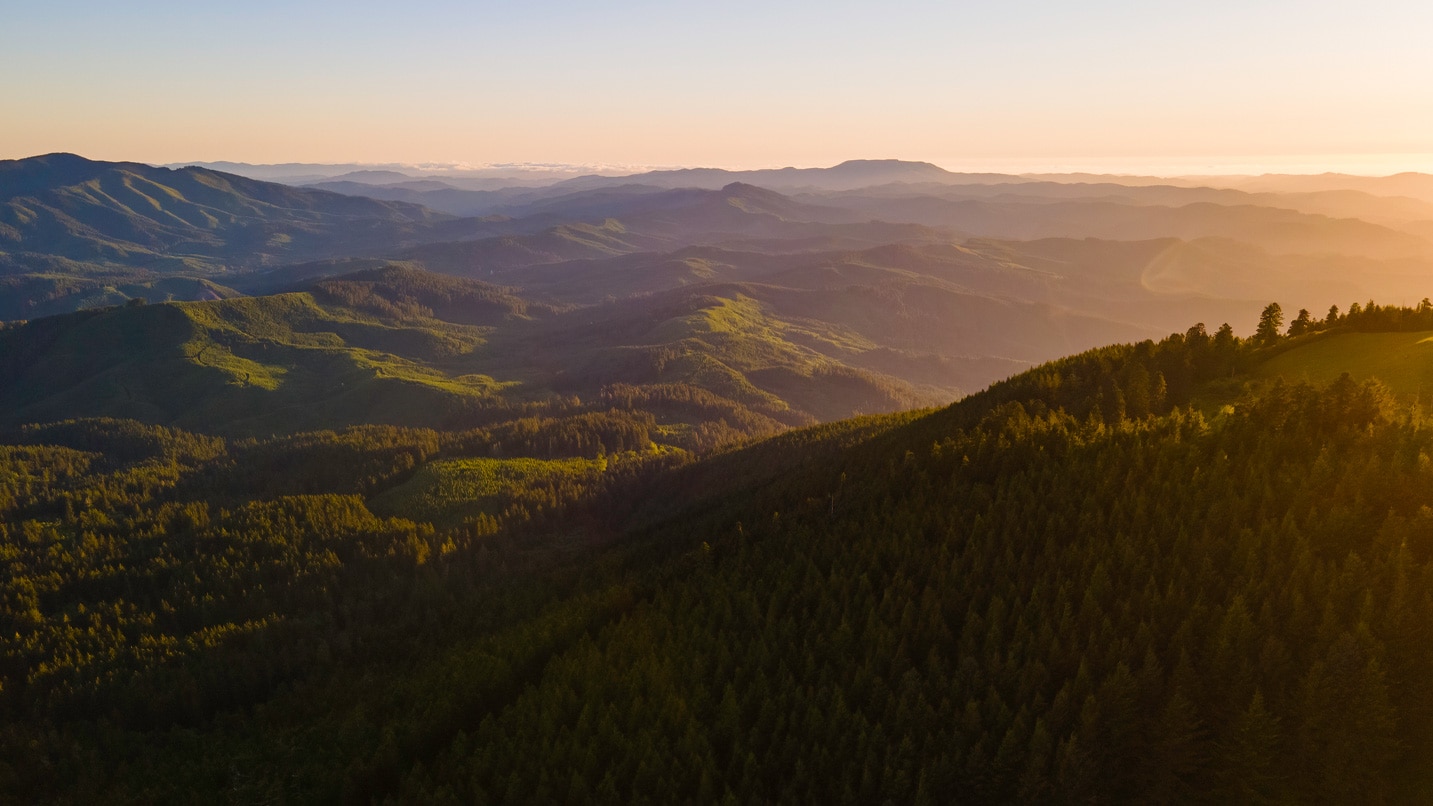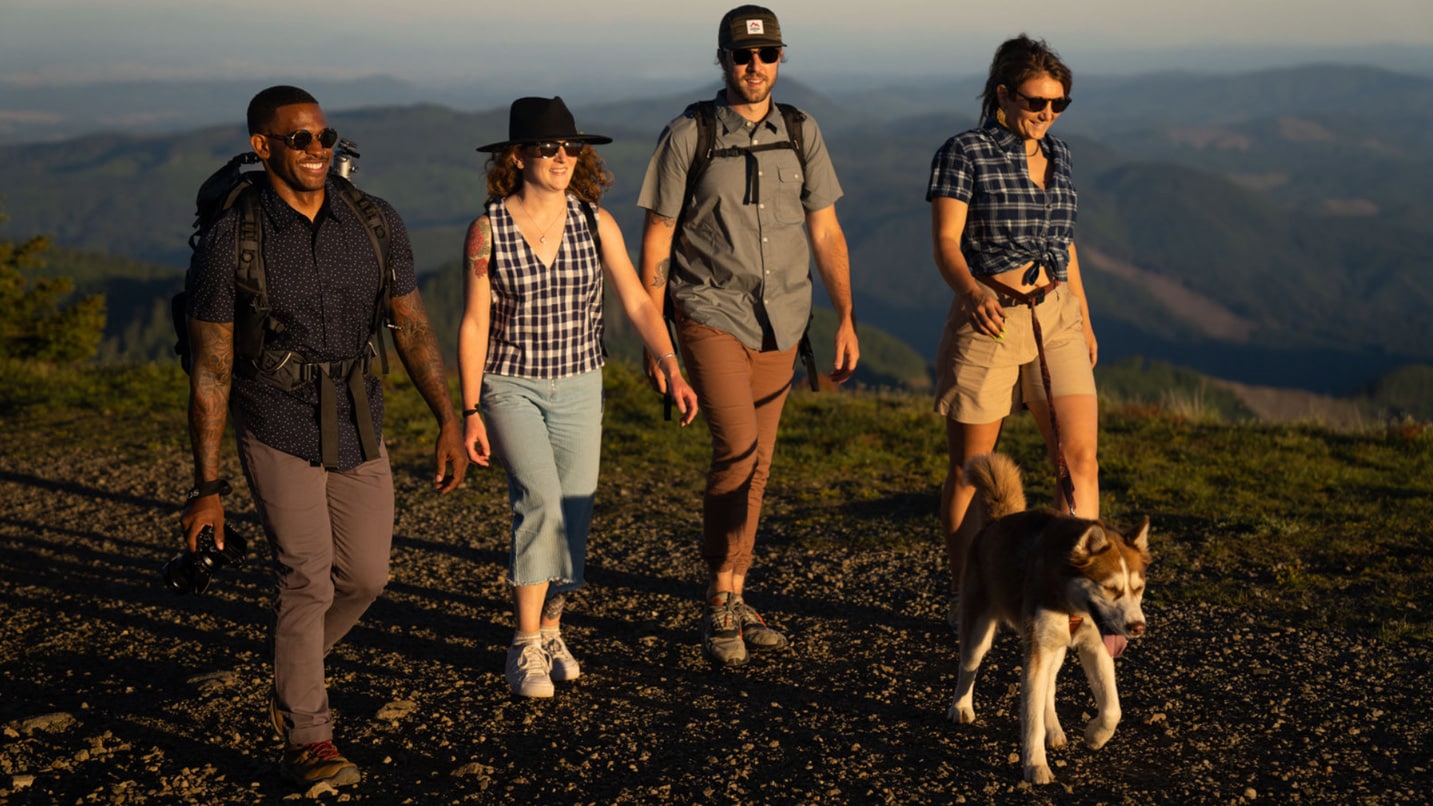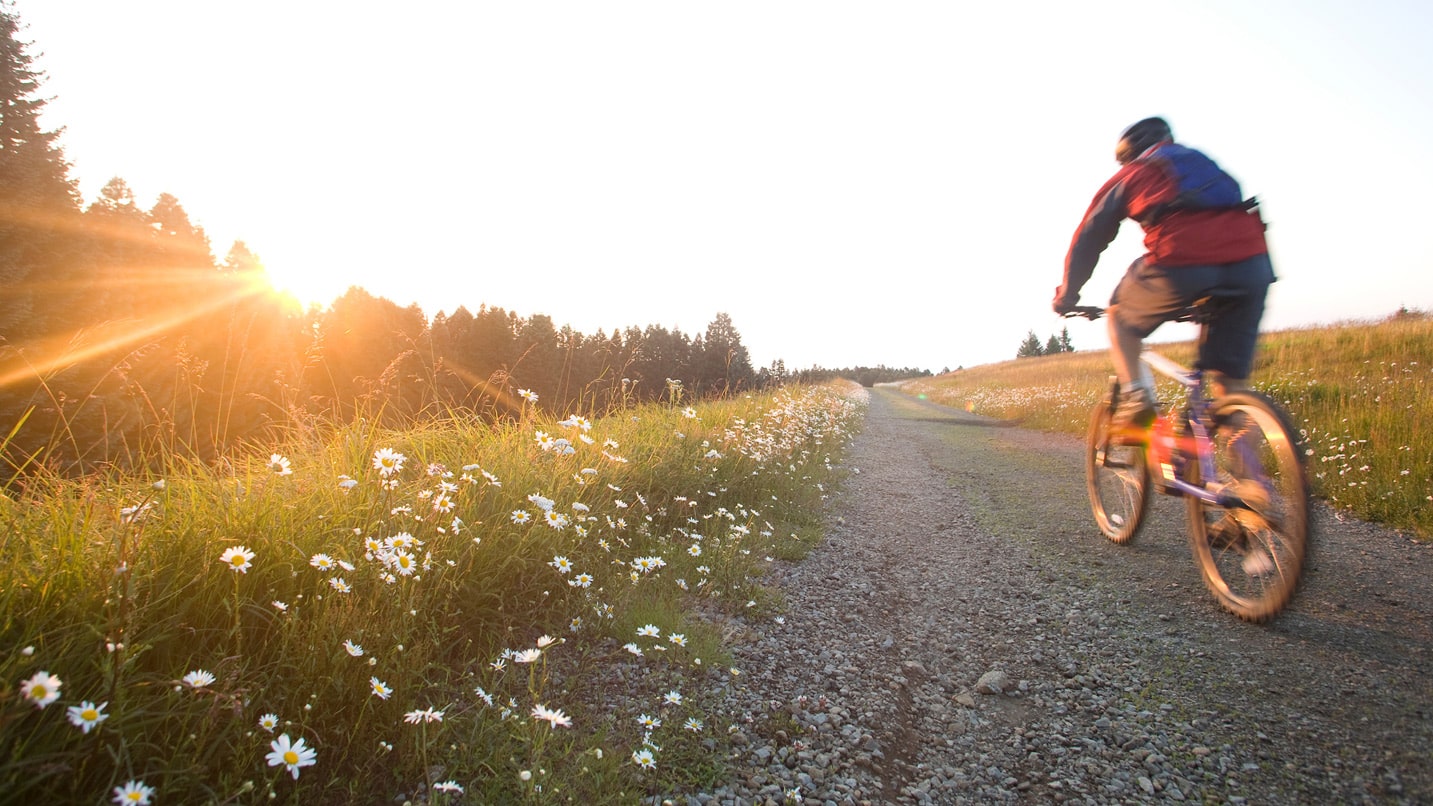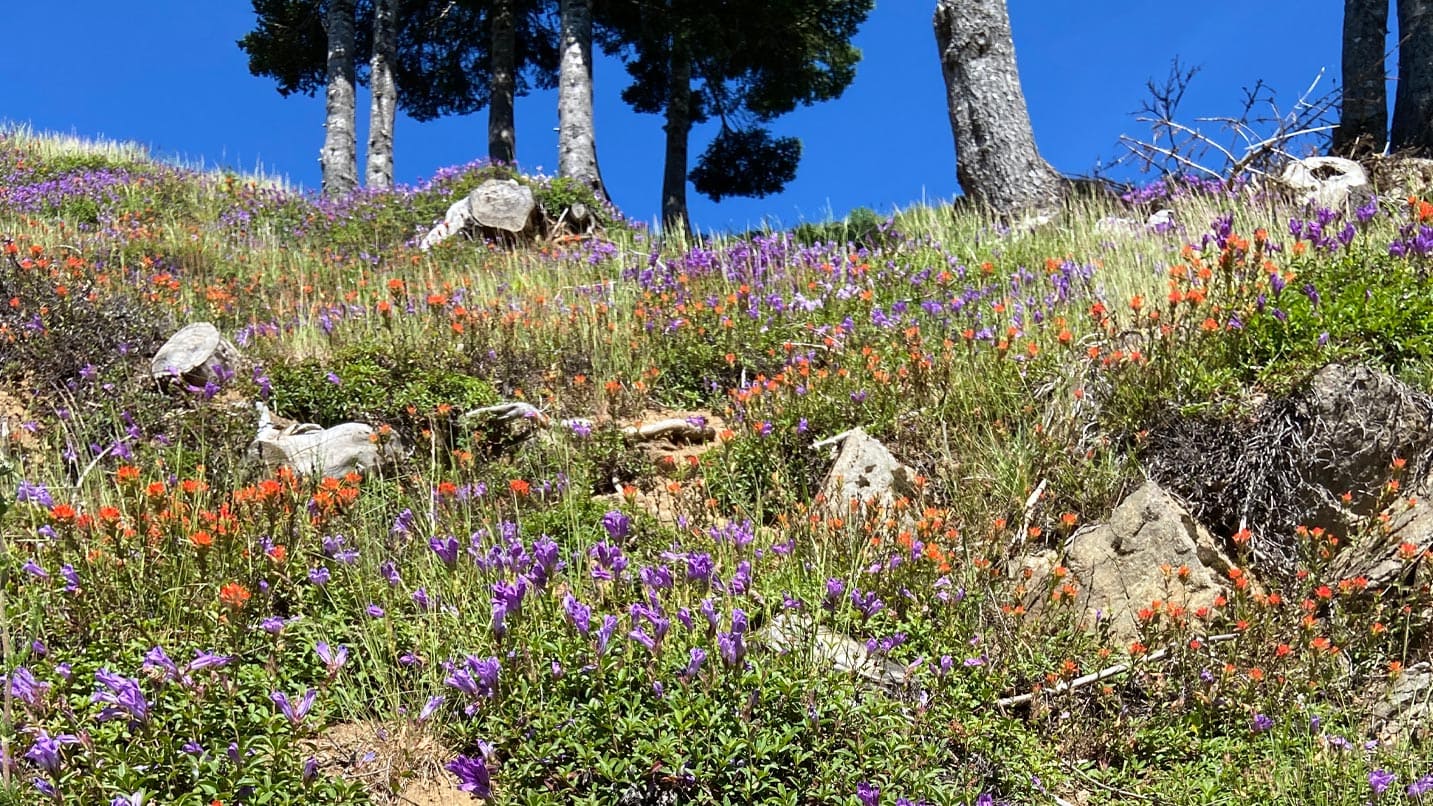On the first day of spring, my friend and I drive up to the upper parking lot at Marys Peak and open the car doors, bracing ourselves for the wind. The clouds hang heavy, obscuring the panoramic views from the 4,097-foot peak, the highest in Oregon’s Coast Range. With hand warmers in my gloves and hiking poles to steady myself on slippery ice, I’m ready to trudge across the snow-covered meadow and up a moderate slope along the 0.7-mile hike to the summit.
Marys Peak, 25 miles west of Corvallis, is quiet in March. It takes a while for spring to reach this high, and there’s a mystical feeling to the wind blowing over the expanse of white. But by May, droves of wildflower seekers will make such a quiet day seem unbelievable. By early summer, blooms will light up the peak. On clear days, hikers have a 360-degree view of the ocean and the Cascades. Here’s how to explore.

A Botanical Island in the Sky
Since 1989 Marys Peak has been federally protected as a designated Scenic Botanical Special Interest Area, because of its rich and unique diversity of plant life. (For unknown reasons, the apostrophe in the peak’s name disappeared sometime after first showing up on an 1855 survey map.) Its distinction is the juxtaposition of three diverse ecosystems in one area: a noble fir forest, a subalpine desert-like rock garden and a lush meadow. “Marys Peak is frequently referred to as an island in the sky,” explains Jeff Uebel, a retired U.S. Forest Service worker who now volunteers with the Alliance for Recreation and Natural Areas and the Marys Peak Stewardship Group. “You’ve got plants that basically got established there when the climate was more similar to Central Oregon.” Botanists have been climbing the peak since at least 1881 and documenting its unusual plant life.

Hiking Trails
Four primary trails take you around the mountain. For the shortest hike with the biggest payoff, visitors drive up to the summit parking lot and take a family-friendly walk to the top. This 1.4-mile out-and-back gravel trail has some pitch, but most hikers will find it pretty easy. The 2.1-mile Summit Trail is a little longer and more challenging with an elevation gain of 629 feet.
If you visit the summit in early May, right after snowmelt, you’ll see delicate, banana-yellow glacier lilies. By June there’s a multicolored flush of wildflowers. The rock garden dazzles from middle to late June through July, alive with spreading phlox, scalloped onion and brilliant paintbrush. In August, when it’s really hot on the valley floor, Marys Peak is 10 to 15 degrees cooler.
For a more sheltered hike through the noble firs, walk the Meadowedge Trail, a 1.6-mile loop. Hikers looking for more challenge can take the East Ridge Trail, which packs 1,400 feet of elevation gain into 3.5 miles, leading hikers from old-growth Douglas fir forest up to noble firs as they climb. The toughest trail is North Ridge, which ascends 2,200 feet over 5.5 miles through old-growth forest.

Rugged, Seasonal Mountain Biking
Mountain bikers can tackle an 11-mile loop on Marys Peak, climbing the East Ridge Trail and descending the North Ridge Trail, a rooty, rocky, flowy route that winds through beautiful old fir forest. It’s a fairly technical ride with more than 2,500 feet of climbing, so beginners should hone their skills elsewhere before taking on Marys Peak. The singletrack is a seasonal treat permitted May 15 to October 15. The park’s gravel and paved roads are fair game for any bikes (including fat bikes and e-bikes) year-round. Peak Sports in Corvallis has rentals.

Stewardship of Fragile Ecosystems
The peak faces two major conservation issues: invasive plants and visitor impacts. Both native and non-native plants pose threats to Marys Peak’s most fragile ecosystems, the meadow and rock garden “The noble fir and the Douglas fir are seeding down into the meadow, which is quickly being lost to encroaching forest,” explains Uebel. Stewardship groups are controlling the native tree population around the meadow. But other impacts come down to visitors, who accidentally carry non-native seeds on their boots, pets and cars. Visitors can help by staying on designated trails, and by cleaning boot soles, brushing the dog, and hosing off car tires and undercarriage at home before arriving at Marys Peak.
If You Go:
Marys Peak weather is highly variable and can differ dramatically from the valley below. Bring extra layers and rain gear — the peak gets more than 100 inches of rain annually, and winds can blow more than 100 miles per hour. Carry the Ten Essentials and keep Fido on a leash.
Can’t get there in person? Take a virtual field trip to Marys Peak.



